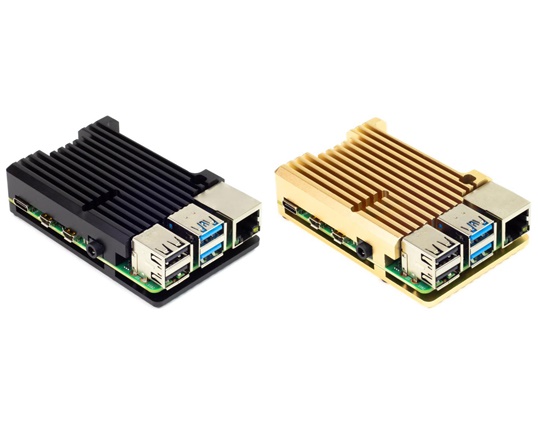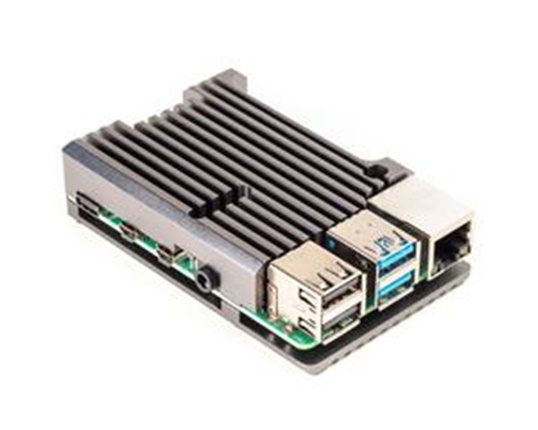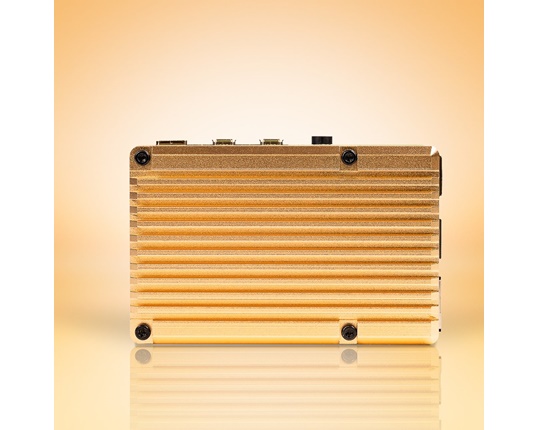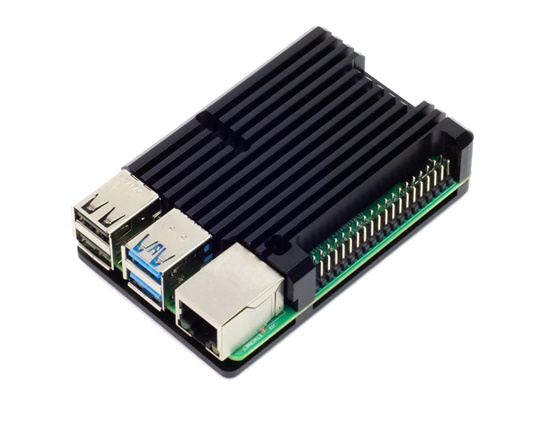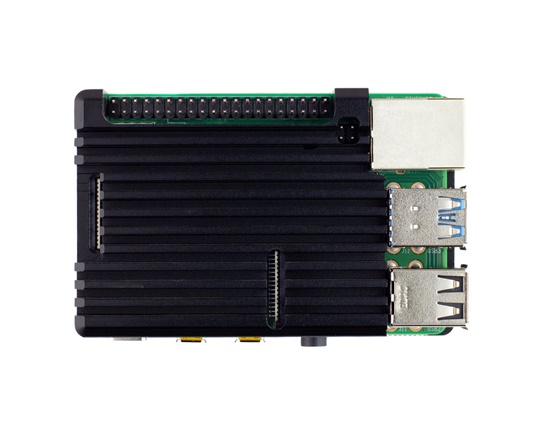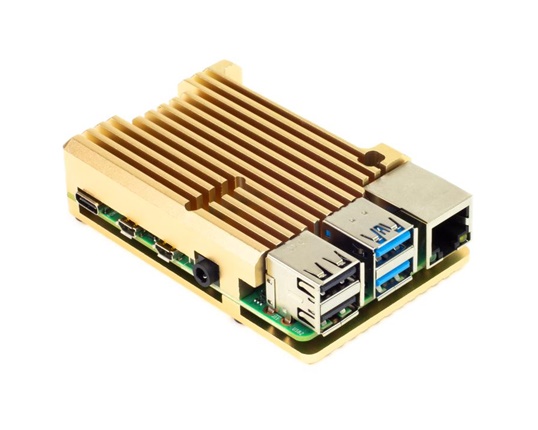Boîtier dissipateur en aluminium pour Raspberry Pi 4
SKU: HS-CASEWhy use a heatsink and a case, when you can use a heatsink case?! This sleek, anodized aluminum case for Raspberry Pi 4 will give you 10-15°C of passive cooling under full CPU load. Pretty cool.
- Product description
Why use a heatsink and a case, when you can use a heatsink case?! This sleek, anodised aluminium case for Raspberry Pi 4 will give you 10-15°C of passive cooling under full CPU load. Pretty cool.
This anodised aluminium heatsink case will protect your Raspberry Pi 4 and give you the best passive cooling we've seen in our extensive testing. It's great for situations where you want completely silent cooling, like home media centres.
It comes with a thermal pad to provide thermal contact between the CPU and top case, and a handy allen key and set of hex bolts to attach the case together.
The case gives you access to all of the ports, pins, and connectors. You can just about get away with using low-profile HATs and pHATs (those without bulky components on the underside, using one of our boster headers, but be extremely careful not to short any components on the metal top case!
Features
- Anodised aluminium top and bottom case (in black or gold)
- Heatsink fins
- Thermal pad
- Hex bolts and allen key included
- Access to all ports, pins, and connectors
- Compatible with Raspberry Pi 4
Assembly
Click here to see our tutorial on assembling the case, or follow the brief instructions below.
Assembling your heatsink case is pretty easy and should only take a couple of minutes. The first, and most important thing is to make sure that your Pi is powered off and unplugged before you fit the case.
Take one of the thermal pads and peel the protective films off both sides of it (there's a white film and an easy-to-miss clear film on the other side. Stick the thermal pad onto your Pi's CPU (the metal square nearest the middle of the PCB).
Sticking the thermal pad to the CPU first is a much better way to position it correctly than trying to stick it to the case.
Position the top case and then, holding it in place, flip the whole thing over and position the bottom case on the underside of your Pi. Use the four hex bolts and allen key to secure the case.
Notes
- The case is metal and hence conductive, so be careful not to short any components on it, and ensure that your Pi is powered off and unplugged when fitting the case
- It may be obvious, but the case will get hot in use
- Dimensions: 87x56x25.5mm
 SWEDEN
SWEDEN
 INTERNATIONAL
INTERNATIONAL

